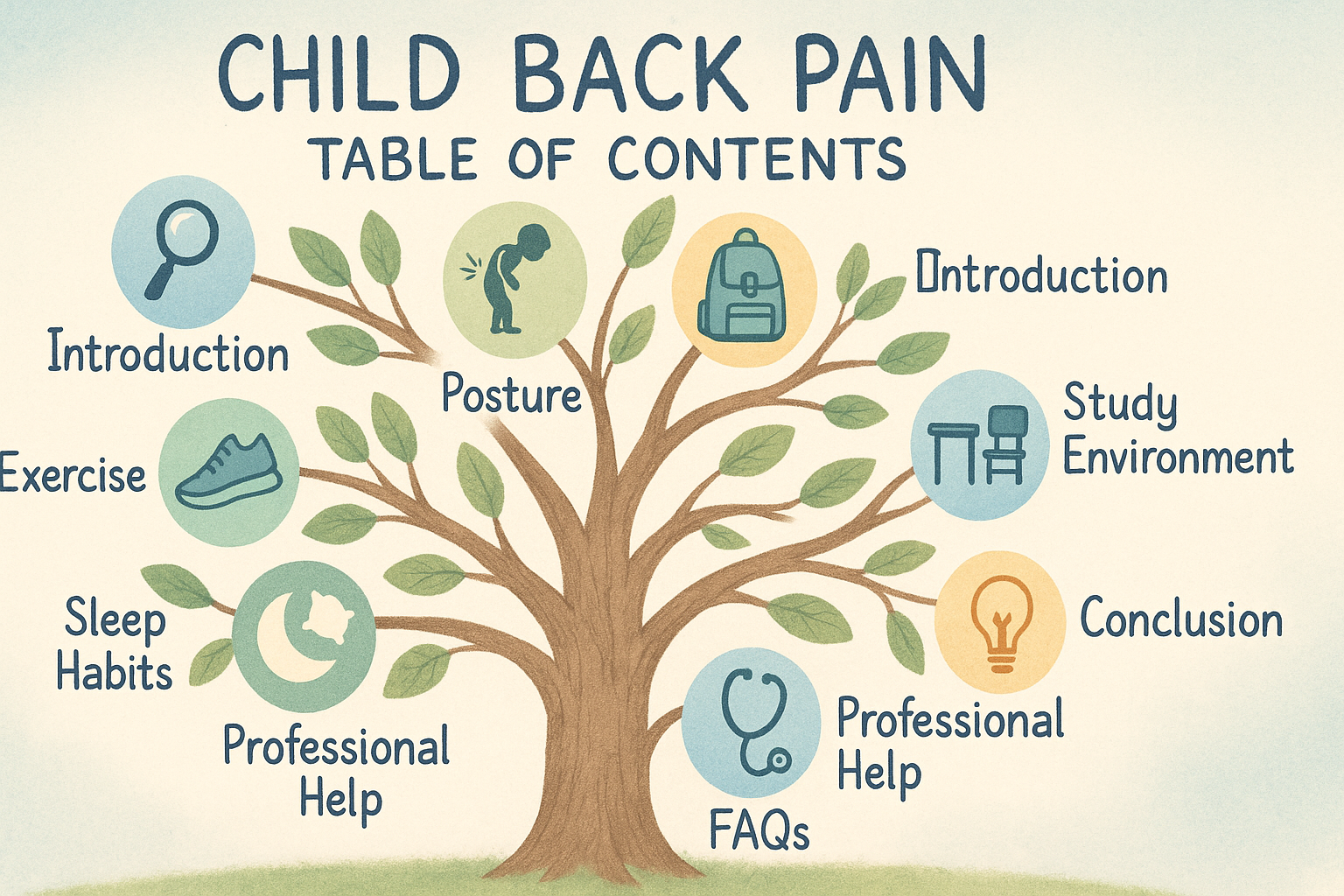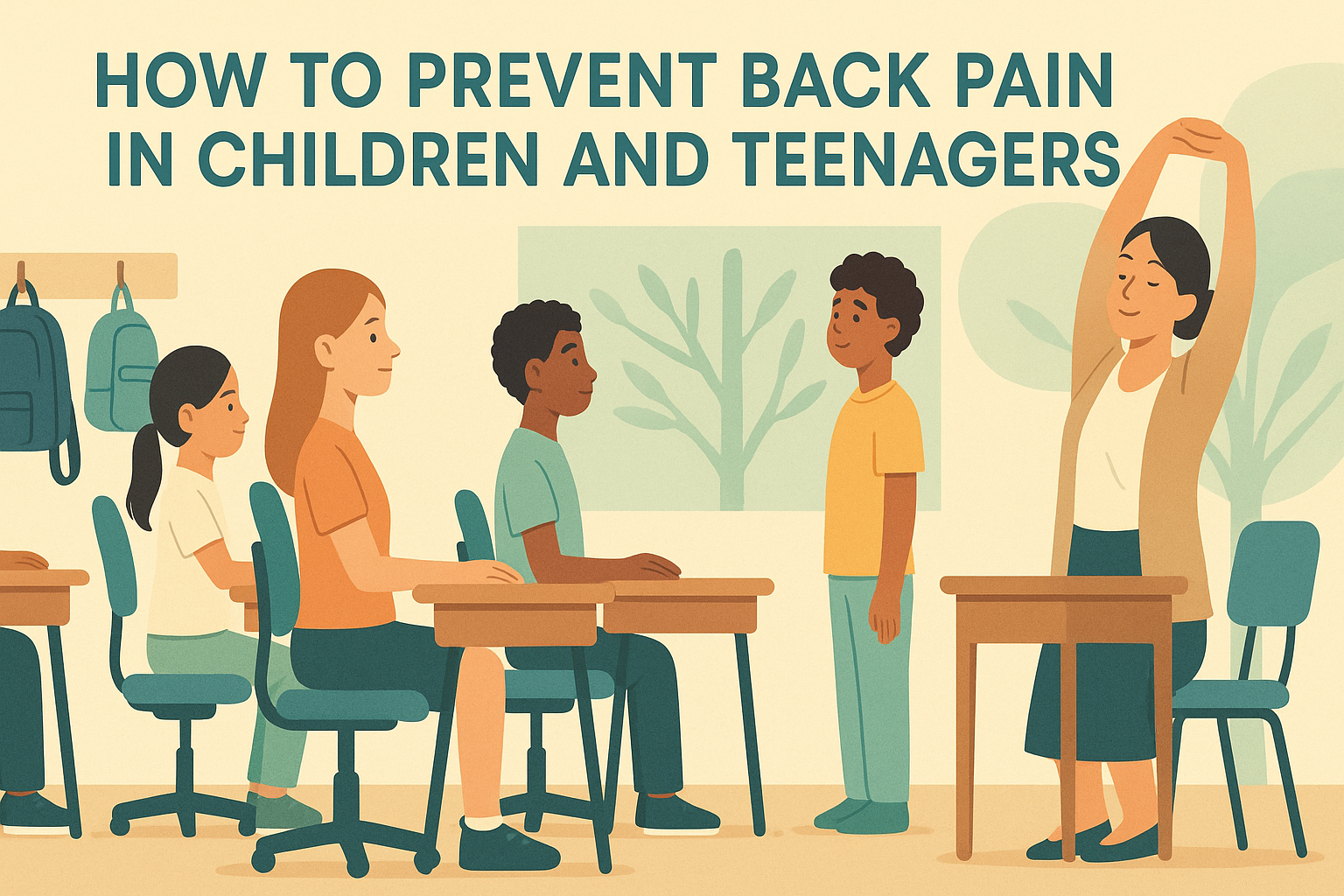How to Prevent Back Pain in Children and Teenagers
Back pain isn’t just an adult problem—it’s becoming increasingly common in children and teenagers too. As a parent, it’s vital to understand how to help your child maintain a healthy back. This blog post will explore practical steps to prevent back pain in kids and teens, ensuring they lead active and pain-free lives.
Table of Contents
1. Introduction
2. Understanding the Causes of Back Pain in Children
3. Importance of Proper Posture
4. The Role of Backpacks
5. Encouraging Regular Exercise
6. Creating an Ergonomic Study Environment
7. Healthy Sleep Habits
8. When to Seek Professional Help
9. Conclusion
10. FAQs

Understanding the Causes of Back Pain in Children
Back pain in children and teenagers can stem from a variety of sources. Common causes include poor posture, heavy backpacks, inactive lifestyles, and sometimes underlying medical conditions. Understanding these causes is the first step in preventing discomfort.
Importance of Proper Posture
Good posture is crucial for a healthy back. Encourage your child to sit and stand correctly—shoulders back, back straight, and ears aligned with their shoulders. Proper posture not only prevents back pain but also boosts confidence and energy levels. 💪

The Role of Backpacks
Backpacks can be a significant contributor to back pain if not used correctly. Ensure your child’s backpack is lightweight, well-fitted, and worn with both straps to distribute weight evenly. Ideally, the backpack should weigh no more than 10-15% of the child’s body weight.
Encouraging Regular Exercise
Physical activity strengthens muscles and improves flexibility, reducing the risk of back pain. Encourage your child to engage in regular exercise, whether it’s sports, dancing, or even yoga. Physical activities promote a healthy spine and overall well-being. 🏃♀️
Creating an Ergonomic Study Environment
With more time spent on screens, setting up an ergonomic study space is essential. Ensure that the computer screen is at eye level, chairs support the lower back, and feet are flat on the ground. Regular breaks to stretch and move around can prevent stiffness and discomfort.
Healthy Sleep Habits
A good night’s sleep on a supportive mattress is crucial for spinal health. Ensure your child’s mattress is neither too soft nor too hard and that they maintain a comfortable sleep position. Encourage sleeping on their back or side, rather than the stomach, to reduce strain on the spine. 💤
When to Seek Professional Help
If your child’s back pain persists despite these measures, it may be time to consult a healthcare professional. Persistent pain can sometimes indicate underlying issues that need medical attention. Early intervention can prevent more serious problems down the line.
Conclusion
Preventing back pain in children and teenagers is all about fostering healthy habits early on. From posture to exercise and sleep, every small step counts towards a pain-free future. By implementing these tips, you can help your child maintain a healthy back and enjoy their formative years to the fullest. 🌟
FAQs
Q1: What are common signs of back pain in children?
A1: Look for signs such as complaints of pain, changes in posture, reluctance to participate in physical activities, or difficulty sleeping.
Q2: Can carrying a backpack cause back pain in teenagers?
A2: Yes, if the backpack is too heavy or worn improperly, it can contribute to back pain. Ensure it’s not overloaded and that both straps are used.
Q3: What exercises are best for preventing back pain in kids?
A3: Activities like swimming, cycling, and yoga are excellent for strengthening the back and improving flexibility.
Q4: How can technology use affect a child’s back health?
A4: Poor ergonomics during screen time can lead to posture-related back pain. Ensuring ergonomic setups and frequent breaks can mitigate this.
By staying informed and proactive, you can help your child avoid the discomfort and long-term complications of back pain. Remember, healthy habits formed early can lead to a lifetime of well-being! 😊
